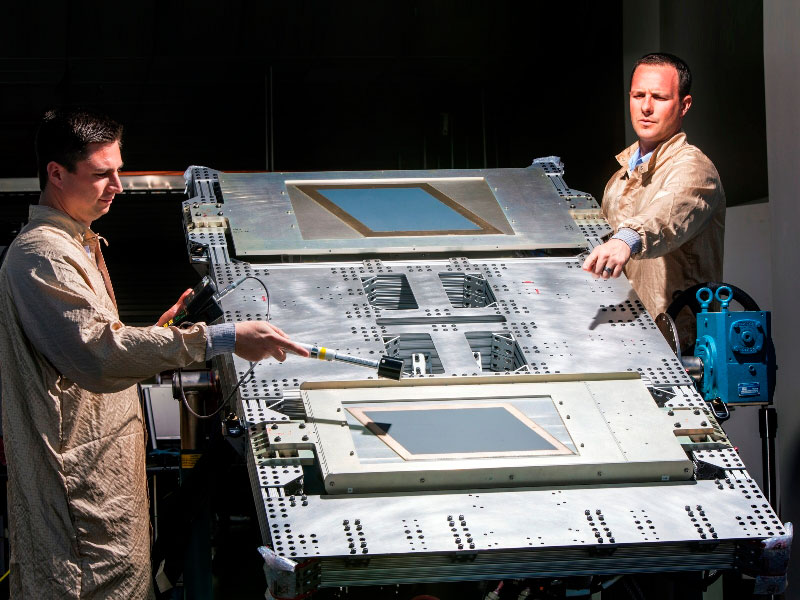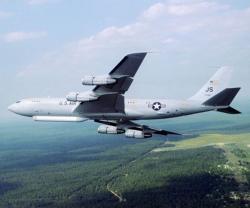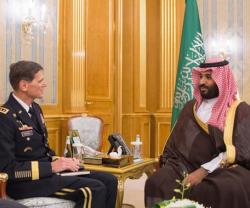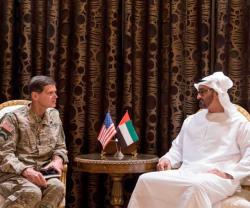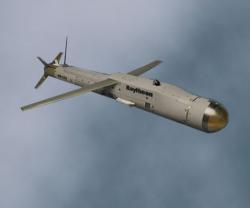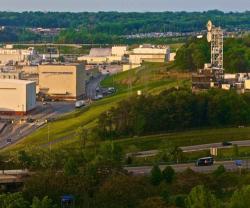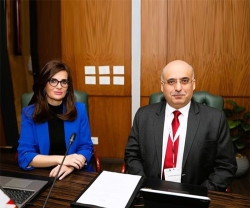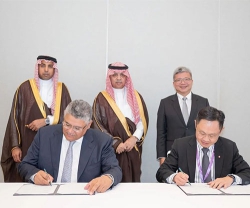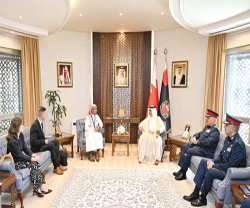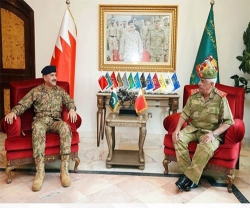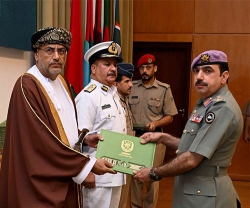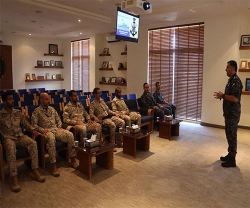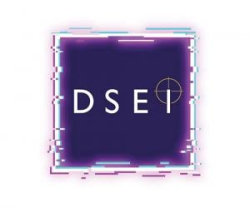NGC Moves New B-2 SatComs Concept to the High Ground
11.07.2013 North America
Northrop Grumman Corporation (NGC) has taken another significant step to reduce the risks and costs associated with producing an extremely high frequency (EHF) satellite communications system for the U.S. Air Force's B-2 stealth bomber.
In a demonstration conducted May 23, Northrop Grumman proved that a new active electronically scanned array (AESA) antenna it has developed for the B-2 can establish and maintain communications services with an on-orbit Air Force Advanced EHF (AEHF) communications satellite. The demo included the antenna, a Navy Multi-band Terminal and the satellite.
Northrop Grumman is the Air Force's prime contractor for the B-2, the flagship of the nation's long range strike arsenal, and one of the world's most survivable aircraft. An EHF satellite communications system would allow the B-2 to send and receive battlefield information significantly faster than its current satellite communications system.
“Our demo marks the first time that AESA antenna technology has been used to communicate with the AEHF network. We showed that our antenna will consistently produce and maintain the high-gain beam needed to communicate with AEHF satellites,” said Byron Chong, Northrop Grumman's B-2 Deputy Program Manager.
During the test, he added, Northrop Grumman successfully demonstrated extended data rate (XDR) communications between the AESA antenna and the AEHF satellite at EHF frequencies. XDR communications take advantage of the AEHF satellites' most advanced, most secure signaling protocols and communication waveforms.
The new antenna is designed to support both tactical and strategic missions. Its innovative “no radome” design allows it to bring new communications capabilities to the B-2 while maintaining the aircraft's major operational characteristics.
Earlier this year, Northrop Grumman validated the performance of the new antenna on instrumented test ranges. The tests verified the antenna's performance over its entire transmit and receive frequency band, and over its required range of scan angles.
The B-2 is the only long-range, large-payload U.S. aircraft that can penetrate deeply into access-denied airspace, and the only combat-proven stealth platform in the current U.S. inventory. In concert with the Air Force's air superiority fleet, which provides airspace control, and the Air Force's tanker fleet, which enables global mobility, the B-2 can help protect U.S. interests anywhere in the world.
The B-52 can fly more than 6,000 nautical miles unrefueled and more than 10,000 nautical miles with just one aerial refueling, giving it the ability to reach any point on the globe within hours.
In a demonstration conducted May 23, Northrop Grumman proved that a new active electronically scanned array (AESA) antenna it has developed for the B-2 can establish and maintain communications services with an on-orbit Air Force Advanced EHF (AEHF) communications satellite. The demo included the antenna, a Navy Multi-band Terminal and the satellite.
Northrop Grumman is the Air Force's prime contractor for the B-2, the flagship of the nation's long range strike arsenal, and one of the world's most survivable aircraft. An EHF satellite communications system would allow the B-2 to send and receive battlefield information significantly faster than its current satellite communications system.
“Our demo marks the first time that AESA antenna technology has been used to communicate with the AEHF network. We showed that our antenna will consistently produce and maintain the high-gain beam needed to communicate with AEHF satellites,” said Byron Chong, Northrop Grumman's B-2 Deputy Program Manager.
During the test, he added, Northrop Grumman successfully demonstrated extended data rate (XDR) communications between the AESA antenna and the AEHF satellite at EHF frequencies. XDR communications take advantage of the AEHF satellites' most advanced, most secure signaling protocols and communication waveforms.
The new antenna is designed to support both tactical and strategic missions. Its innovative “no radome” design allows it to bring new communications capabilities to the B-2 while maintaining the aircraft's major operational characteristics.
Earlier this year, Northrop Grumman validated the performance of the new antenna on instrumented test ranges. The tests verified the antenna's performance over its entire transmit and receive frequency band, and over its required range of scan angles.
The B-2 is the only long-range, large-payload U.S. aircraft that can penetrate deeply into access-denied airspace, and the only combat-proven stealth platform in the current U.S. inventory. In concert with the Air Force's air superiority fleet, which provides airspace control, and the Air Force's tanker fleet, which enables global mobility, the B-2 can help protect U.S. interests anywhere in the world.
The B-52 can fly more than 6,000 nautical miles unrefueled and more than 10,000 nautical miles with just one aerial refueling, giving it the ability to reach any point on the globe within hours.
Previous PostDCI: Helicopter Maintenance in France & Abroad
Latest news
Latest events
IDEF 2025 Turkey - International Defence Industry Fair
22 - 27 Jul 2025Istanbul Expo Center - TurkeyDSEI 2025
09 - 12 Sep 2025Excel, London - United KingdomIntersec Saudi Arabia
29 Sep - 01 Oct 2025Riyadh International Exhibition & Convention Centre - Saudi ArabiaDubai International Air Chiefs’ Conference (DIACC 2025)
16 Nov 2025Atlantis, The Palm Dubai - United Arab Emirates

